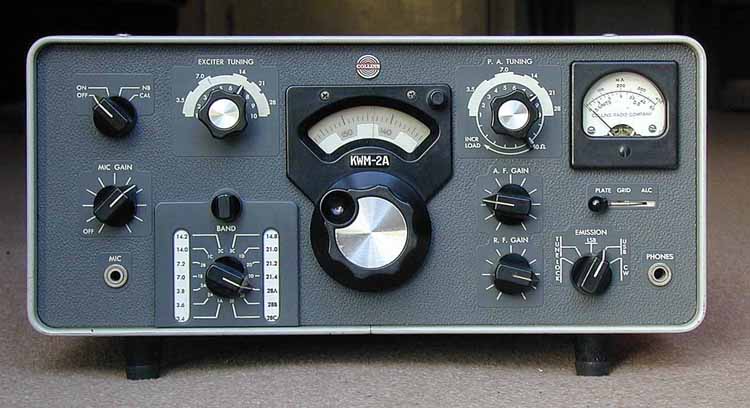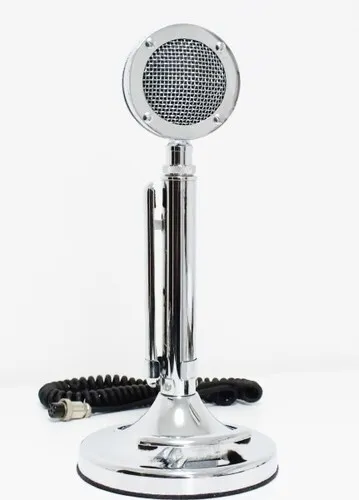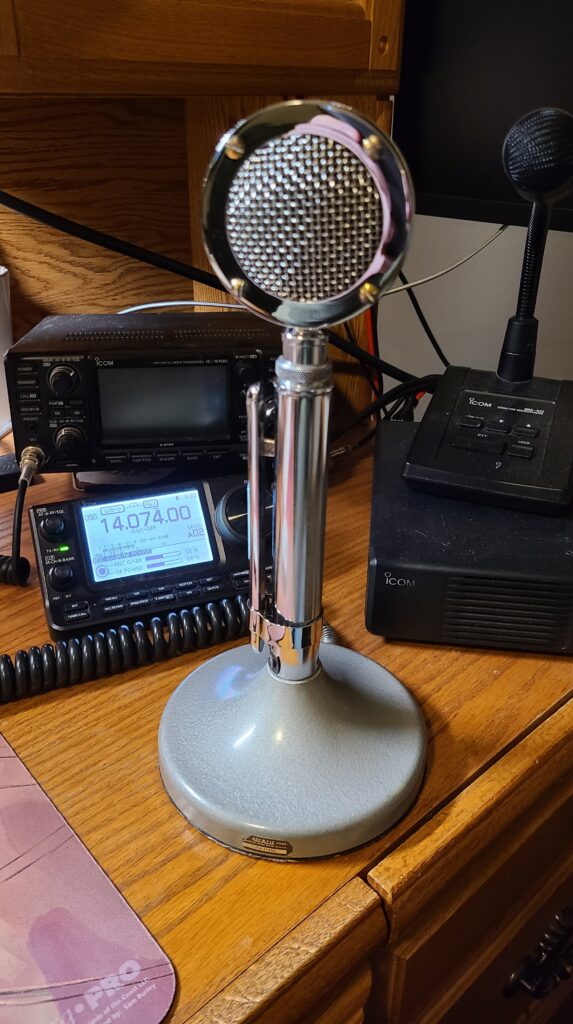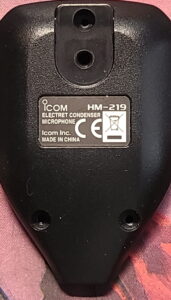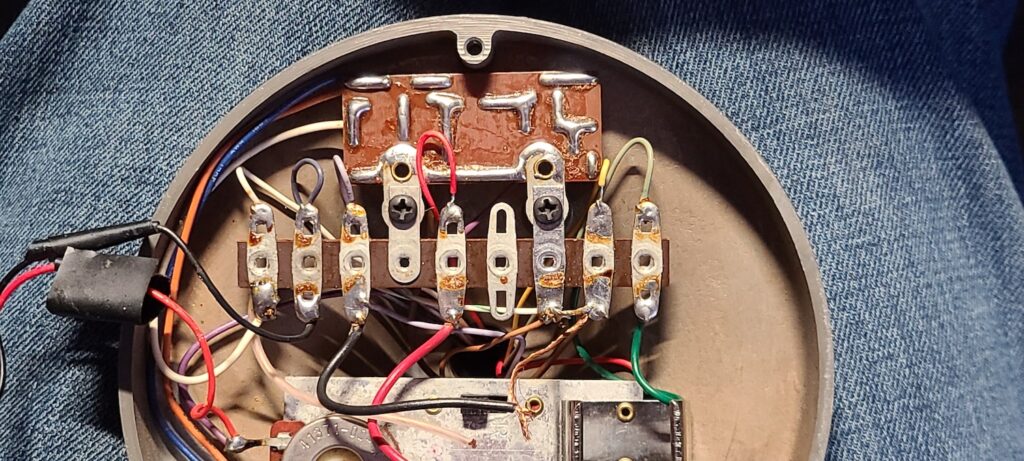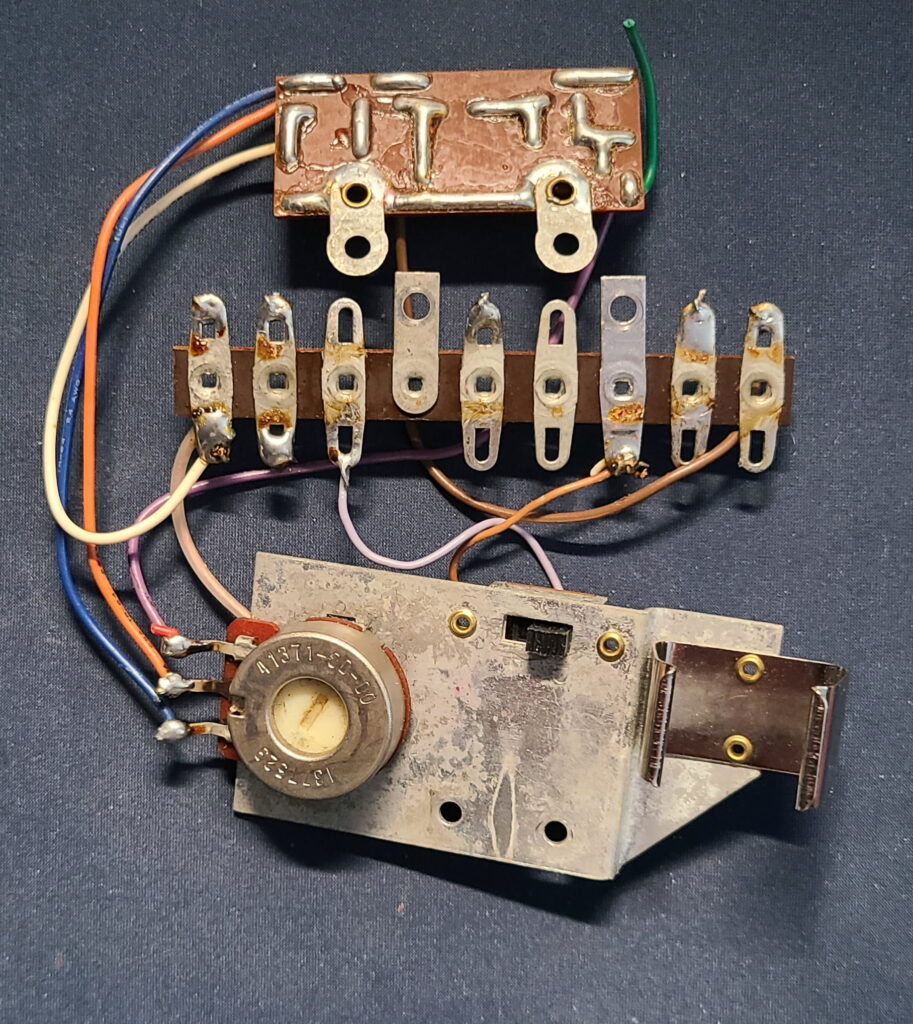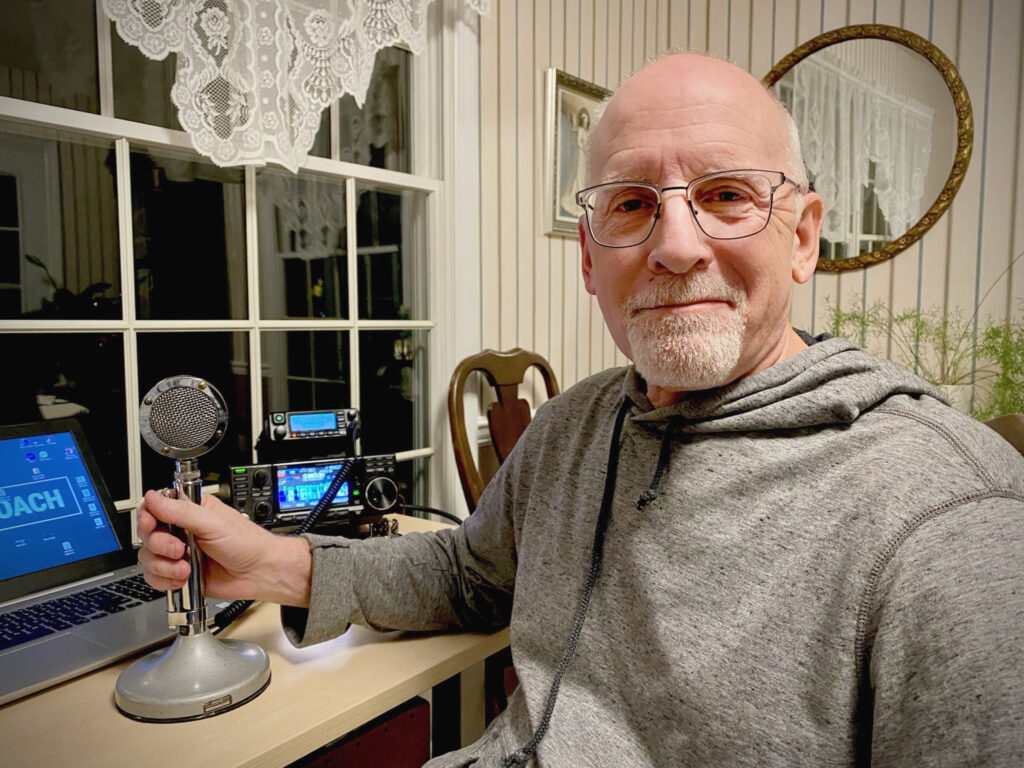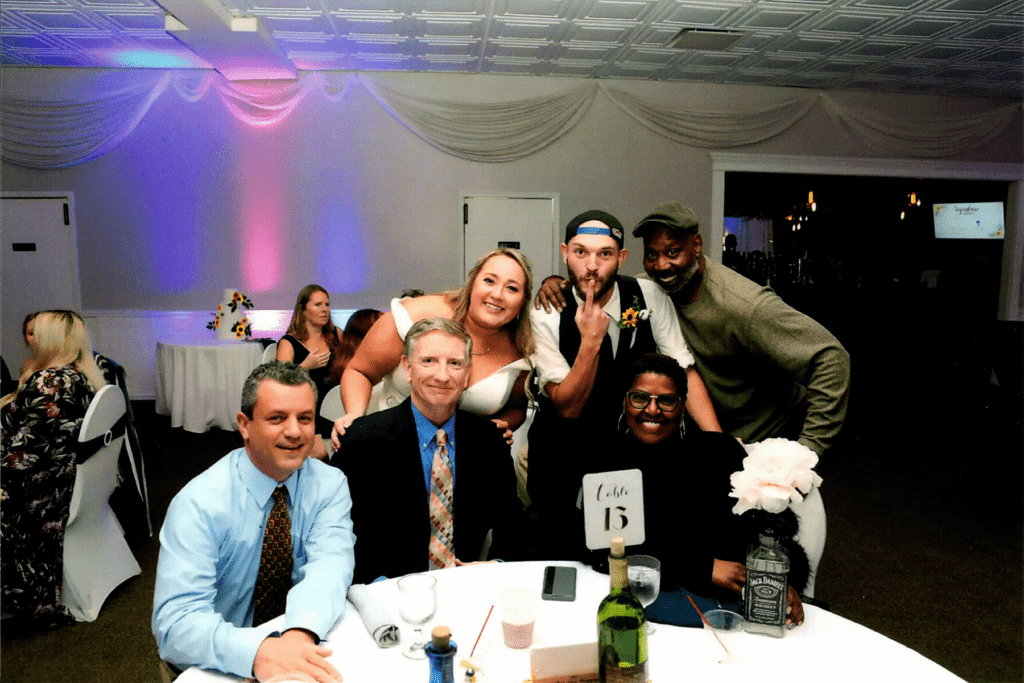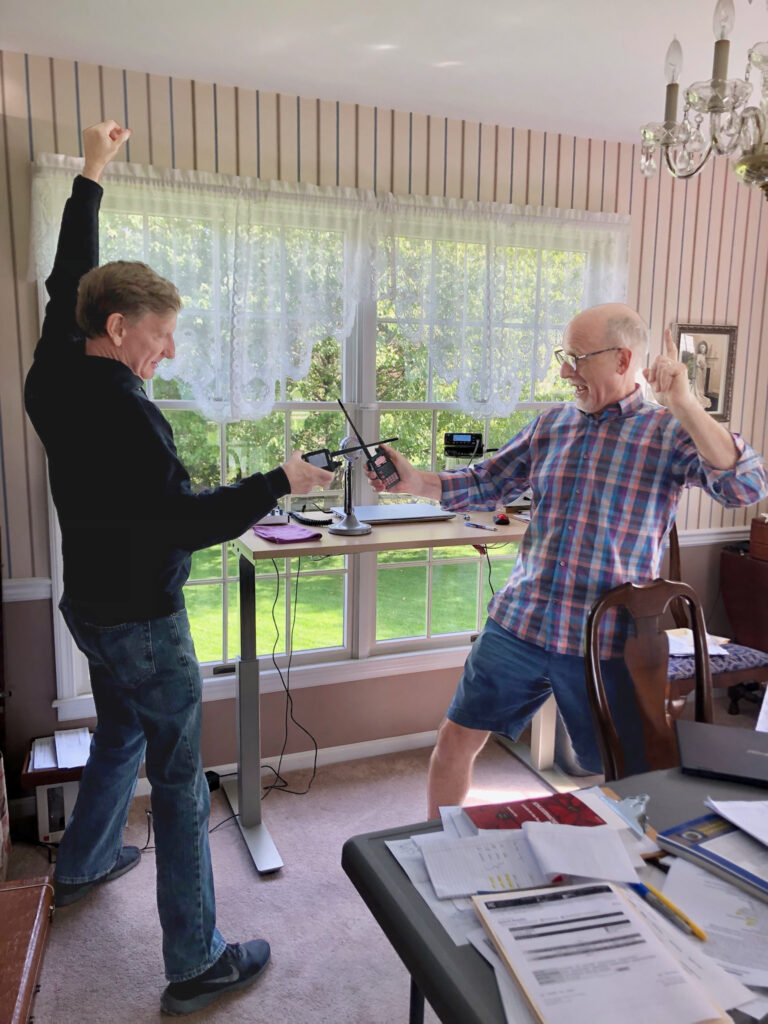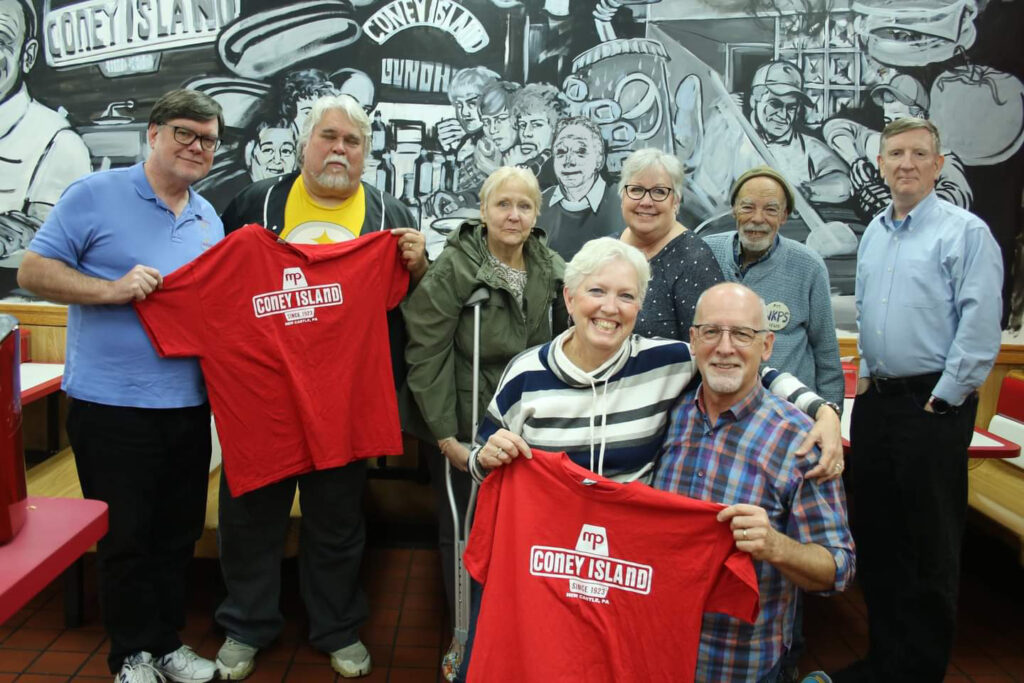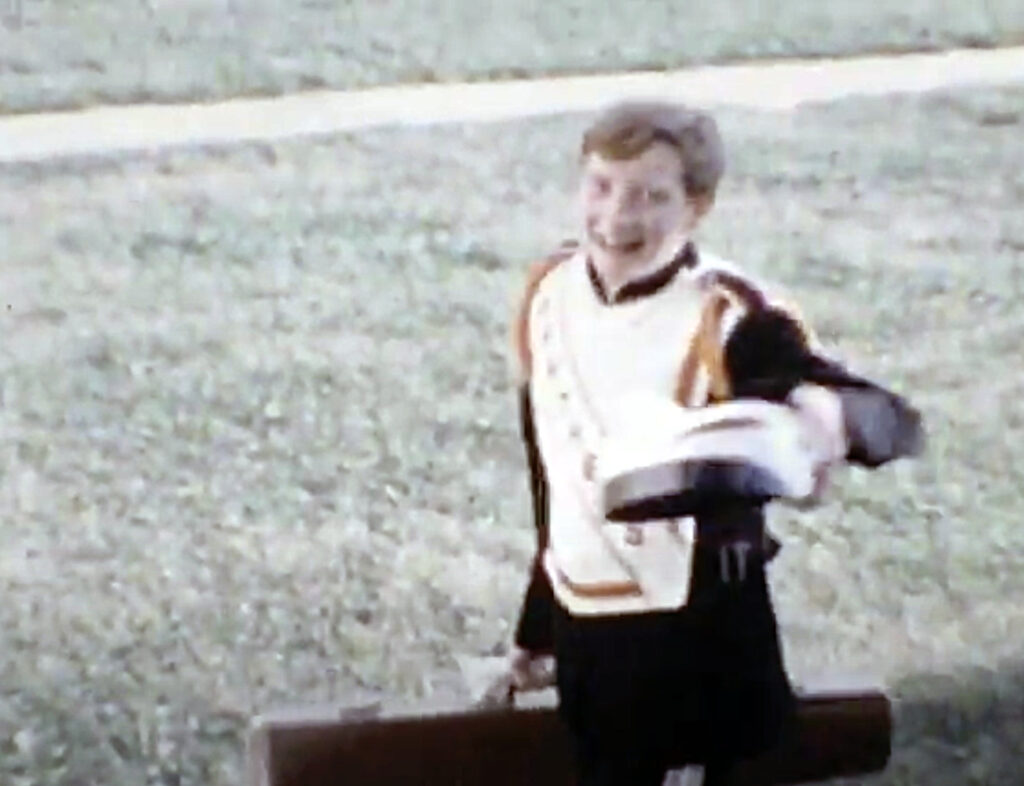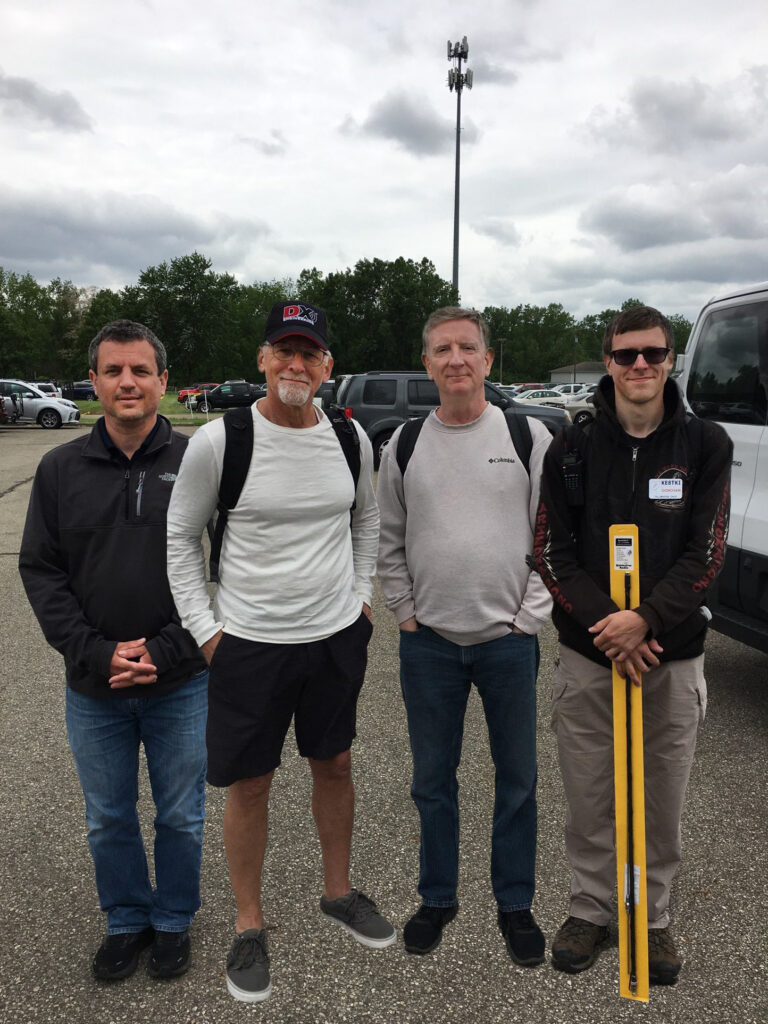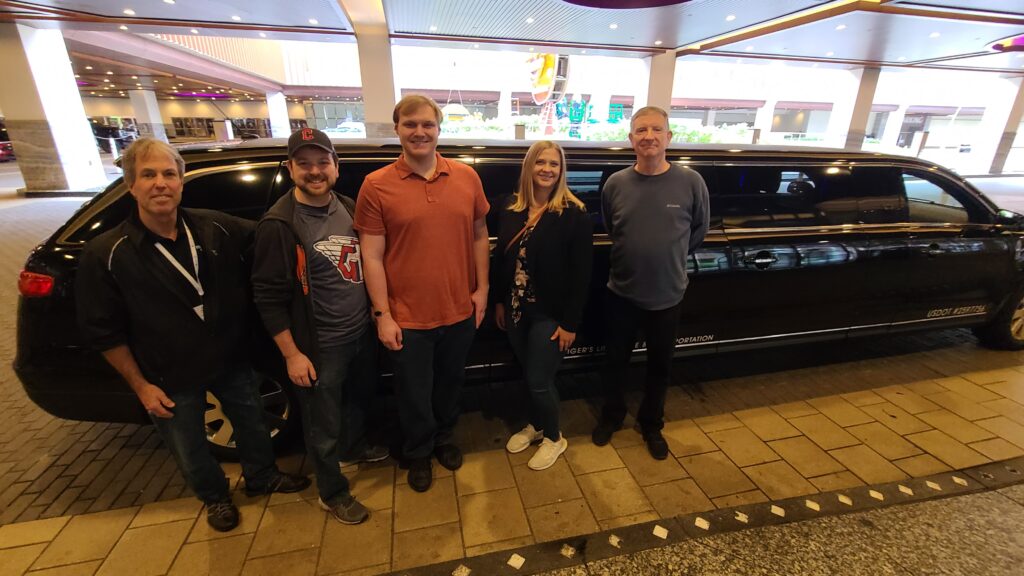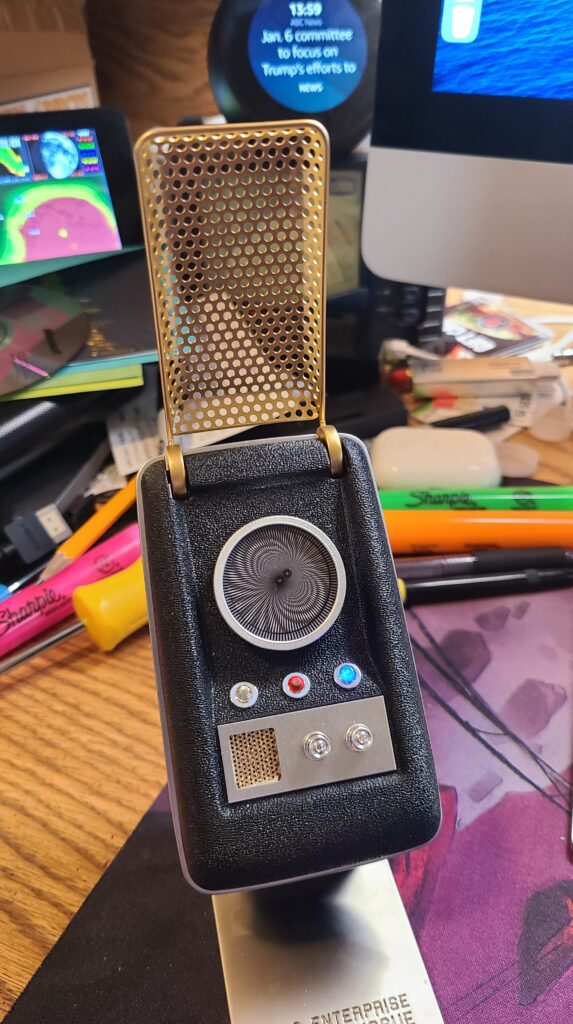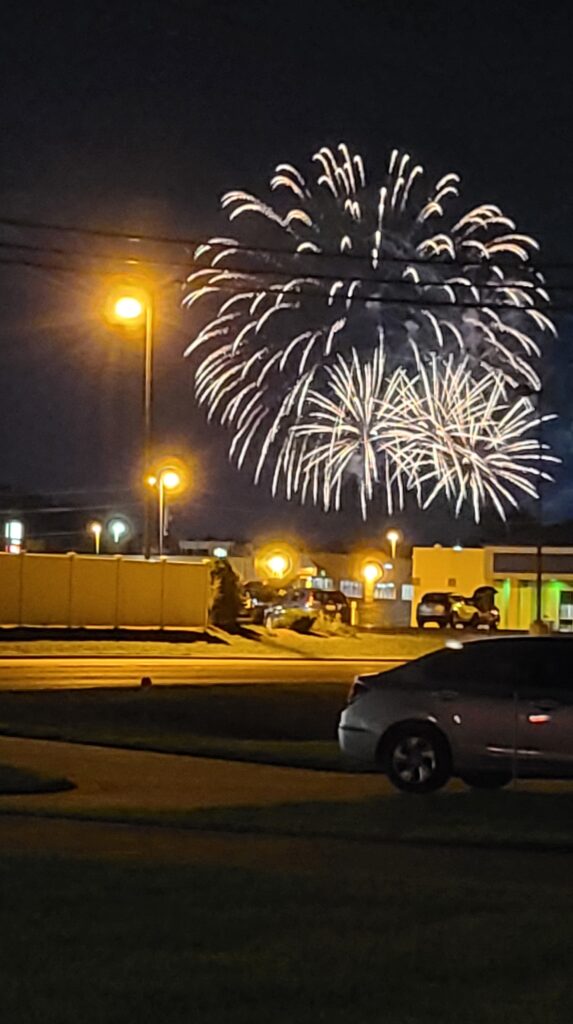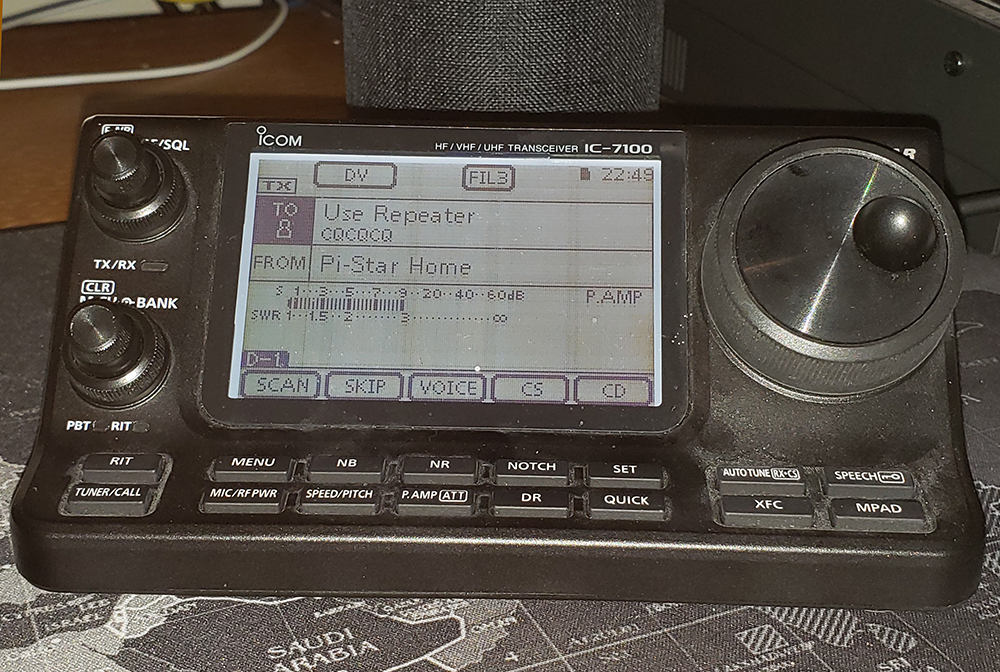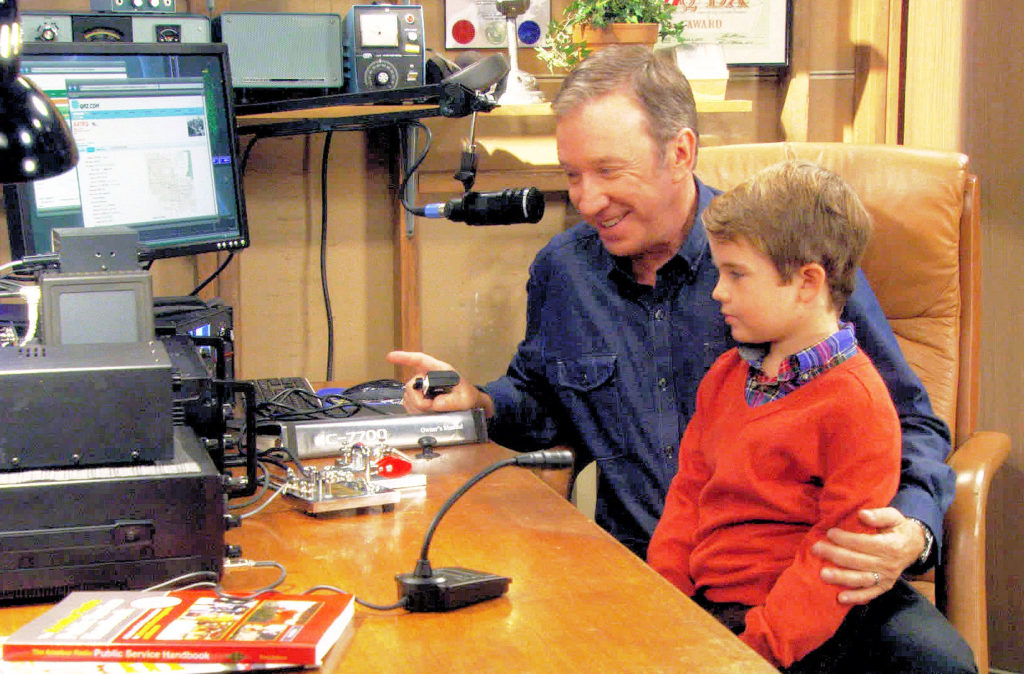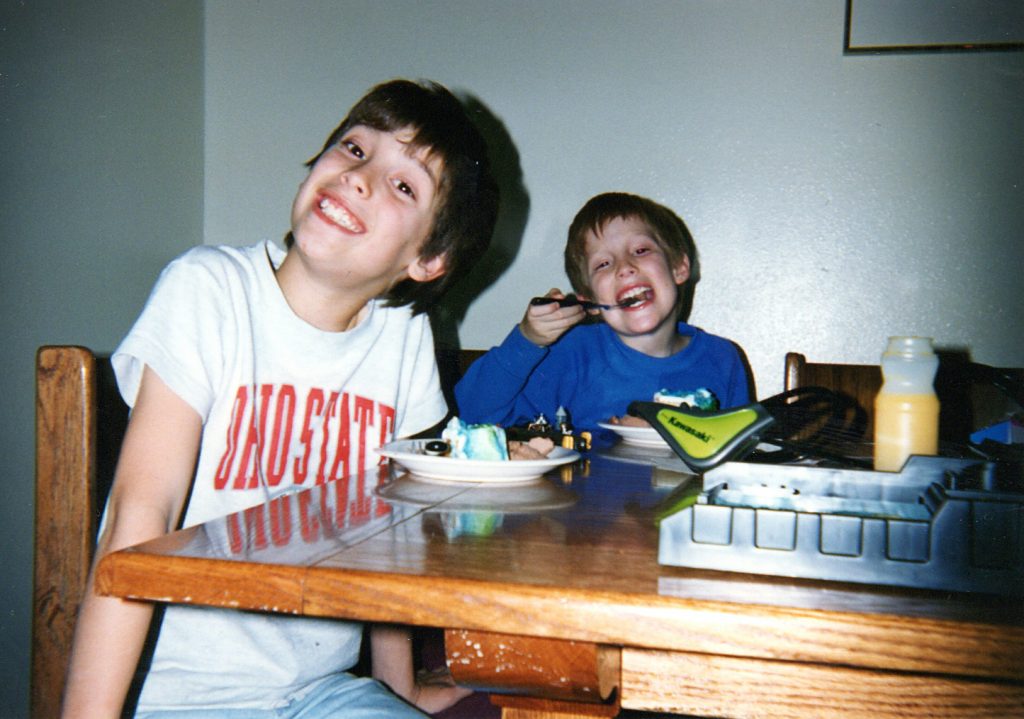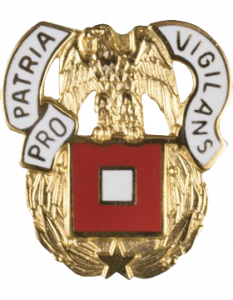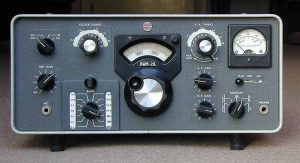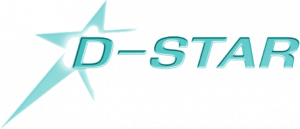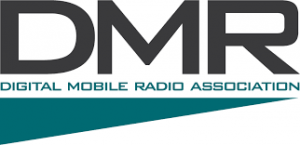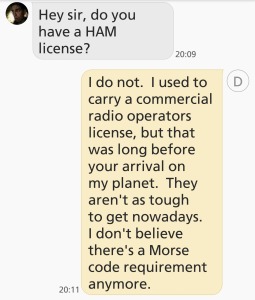Back in this post, I talked about my very first experience with ham radio:
“My introduction to ham radio was in the 1960’s. My childhood friend’s dad, Nathan Vance, was K8TMX. (How I’ve remembered his name and call sign all these years still surprises me.) Mr. Vance was in the middle of a conversation on his ham radio and must have seen me standing there with wide-eyed amazement at the buttons and dials of an old-school Collins KWM-2. He took pity on me and let me talk on his radio to some South American country, as I recall. This being the 1960’s, he conducted his conversation with his fellow operator without the benefit of the internet to get him there. His radio was connected to a HUGE antenna in the backyard, and he communicated directly with the other operator.“
One of the things I remember was Mr. Vance’s magnificent chrome microphone that looked something like this:
Both of these pieces of ham radio hardware, the Collins KWM-2 and this Astatic D-104 microphone, were my first exposure to ham radio and are burned in my memory. This has led to a long-standing sentimental attachment to them, and while I had never owned either of these retro radio designs, I always longed to have them in my radio shack.
In this post, I mentioned that Jeff Tobin, frequently mentioned on this website, bought me a used D-104 as a birthday gift and gave it to me the day before we traveled to Dayton, Ohio to the biggest ham radio convention in the world:
“Another birthday gift, this time from Jeff Tobin, KC3NJE. Jeff scored a vintage D-104 ham radio microphone like this one for himself some months ago and I’ve been crazy jealous. For my birthday and just before Hamvention, Jeff gifted me a D-104 of my very own! I was excited, humbled, and grateful for the magnificent gift.“
That was May 19, 2022.
The stock D-104 was not designed to work with modern radios, however, Heil Electronics makes a conversion kit so that the D-104 can work with them. I bought a kit and made multiple attempts to make it work, but due mostly to my own inexperience and directions that were unclear to the uninitiated, I could never make it work. This relegated it to being more of a desk ornament than a working microphone.
Fast forward to the day before yesterday.
As we often do, Jeff and I were on the phone talking ham radio stuff and got to talking about our respective D-104 microphones and how much we really wanted to be able to use them on the air. We tossed around ideas to make the Heil conversion kit work and other possible alternatives.
Then it hit me.
I had a spare Icom handheld microphone that came with one of the modern radios I have. I wondered if I could perform what we in the Army always called a “controlled substitution” and take the guts of the hand mic and mount it in the D-104 case to create a working microphone that I could use on the Icom radios in my shack. There was no question that it would electrically work — it was an included accessory.
I started by opening up the Icom hand mic, taking some measurements, and seeing how it disassembled. After a few minutes of this inspection, I set it aside for the night.
I won’t describe the details of the conversion, but it took me much of the day beginning with downloading the hand mic’s schematic to see how it was electrically wired and how it would interface with the D-104 components that would be retained.
Once convinced it’d work, I gutted the D-104’s internal electronics and through trial and error, determined which wires did what. Once I had those mapped out, I paired them up with the cord that would plug into the radios.
I repeatedly tested each connection before making them permanent with the soldering iron. Once it was all soldered, connections properly insulated, and the mic reassembled, I tested it out and sent a text message to Jeff:
“I couldn’t believe it. Seriously I about shit my pants. Lol. I had to take the capacitor out of the circuit, but once I did that, it worked like a champ. I am absolutely thrilled that your lovely, wonderful, thoughtful gift is now more than a desk ornament. It works on the 7100, the 7300, and the 9700 I suspect. Though I haven’t tried the 9700 yet.”
I can’t thank you enough, Jeff! It makes a great addition to the shack.
Here’s an update to this post. Two days after my mic went into service, Jeff’s did as well. I am so excited that his D-104 is now working perfectly.
It’s twins!!
Here’s what it sounded like doing an echo test using my Icom 7100 with a PiStar hotspot on D-Star :

